It’s a funny thing, this idea of calling something the best. After all, everyone wants to think that their favorite of anything is the best — the best album, book, or cup of coffee — but that can’t always be true. And, when you apply the idea of being the best to a category as wide open as Android phones, which can come in different shapes, sizes, and prices, the task becomes even greater.
However, I think I have a pretty good idea of what makes an Android phone great. I test and review dozens of them every year, and I’ve spent time with just about every phone you can get your hands on in the US (and even some that you can only buy elsewhere). And, across my many Android-fueled adventures, I’ve learned to pick the qualities that make a phone worth buying. So, with that in mind, here’s what I think are the best Android phones you can buy in 2025.
Google Pixel 9 Pro XL: The best Android phone overall
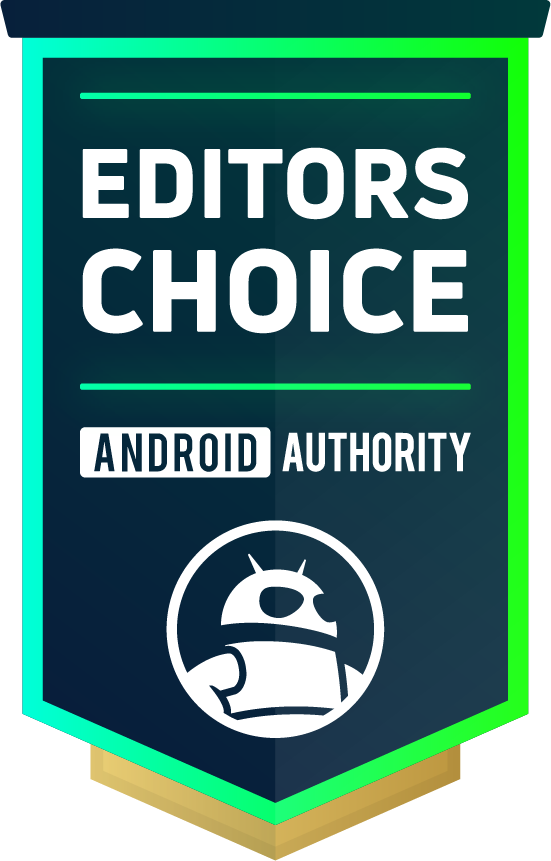
Google Pixel 9 Pro XL
The best specs in the Pixel 9 series • Gorgeous display • Seven years of software updates
MSRP: $1,099.00
Pure XL-ence.
Google reserves its best hardware for the largest device in the line. The Google Pixel 9 Pro XL offers a 6.8-inch display, the biggest battery we’ve ever seen in a Pixel phone, and 37W wired charging. Otherwise, the Pixel 9 Pro and the Pixel 9 Pro XL share almost all other hardware and software features, giving users the option between display sizes with top hardware.
Positives
- Excellent build quality, refined design
- Stunning display
- Extensive update policy
- Sharp, powerful cameras
- Improved wired charging
- Clever Gemini features
Cons
- Tensor still runs warm
- Confusing charging situation
- Only 128GB base storage
I remember when Google’s Pixel phones felt like niche picks for the most dedicated Android fans. They paired clean, simple software with brilliant cameras and added a dash of fun Google design to the mix, and I always felt clever spotting one out in the wild. These days, the Pixel 9 Pro XL hangs its hat on many of the same features as its predecessors, but it’s no longer a pick for those in the know — it’s just the best Android phone that money can buy.
I’ve spent perhaps more time with the Pixel 9 Pro XL (and its smaller Pixel 9 Pro sibling) than anyone else at Android Authority, and it continues to find new ways to impress. Its updated design with smooth, shiny side rails and a camera bar that’s become more of an island feels a little bit Apple-inspired, but in a way that makes me think the student has become the master. Granted, I’ve always been a fan of Google’s camera bar design, but it now feels polished and premium in a way that can stand with any other phone on the market.
And, since we’re already on the topic of the camera bar, let’s dig into Google’s impressive hardware a little further. The Pixel 9 Pro XL packs a 50MP primary sensor that’s simply excellent, capturing plenty of detail and processing images with a very natural color profile thanks to the Tensor G4 chipset. Google’s ultrawide and 5x optical telephoto sensor help to round out the setup with up to 30x zoom, while tricks like a revamped panorama mode and Add Me helped to earn the phone the title of best Android camera phone, too.
With an updated design, improved Tensor G4 chipset, and tons of AI features, the Pixel 9 Pro XL is Google’s most complete phone to date.
Updates under the hood have helped to keep Google’s top-end flagship at the front of my mind since it launched last fall. Its 16GB of RAM (with 4GB reserved for Gemini) and up to 1TB of storage space feel like clever future-proofing methods that will keep the Pixel 9 Pro XL near the top of the list as Google rolls out new AI-powered features like updates to the Pixel Studio, better support for Pixel Screenshots, and new capabilities for Gemini Live over the course of seven years of updates.
Even the Pixel 9 Pro XL’s battery and charging setup have taken a step forward, thanks in no small part to the combination of the more efficient Tensor G4 chipset and upgraded 37W wired speeds. I don’t even mind that I needed to pick up Google’s new USB-C Pixel charger, as I’m still achieving close to two days of battery life between charges. And, with a starting price of $1,099 (or $999 for the Pixel 9 Pro), Google’s best Pixel to date is a little more approachable than rivals from Samsung and Apple.
Samsung Galaxy S25 Ultra: The best ultra-tier Android phone
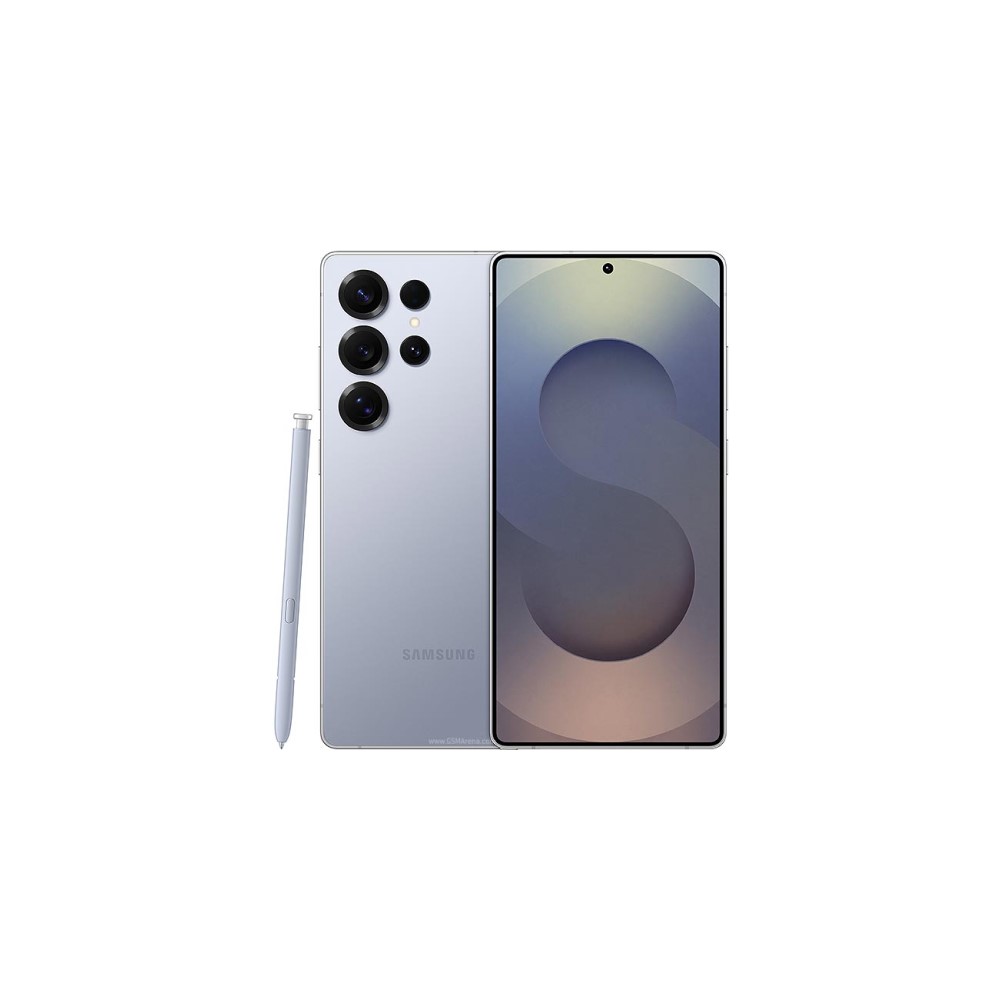
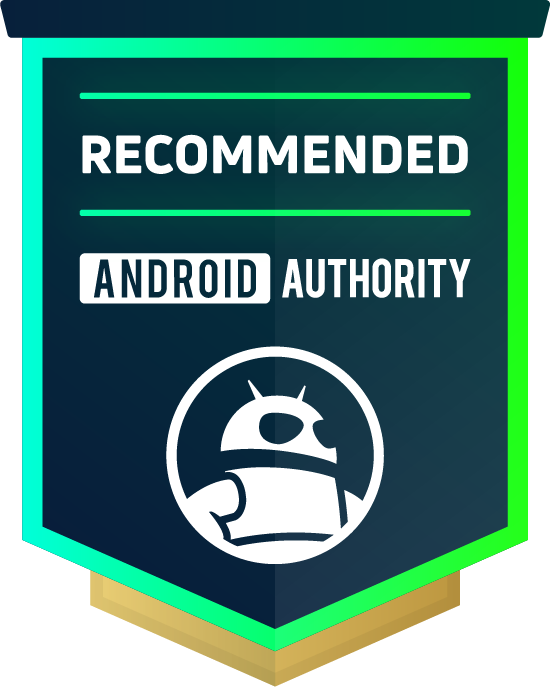
Samsung Galaxy S25 Ultra
100x zoom • Big battery • 7 years software support
MSRP: $1,299.99
Samsung’s best for 2025
Simply put, this is Samsung’s very best phone for 2025. The Samsung Galaxy S25 Ultra is a 6.9-inch QHD+ device with 12GB of RAM, 256GB+ of storage, embedded S Pen, and the overclocked Snapdragon 8 Elite SoC. The key upgrade over the lower S25 models is a 200MP main camera and 100x Space Zoom.
Positives
- Premium materials
- Great battery life
- Solid cameras
- Top-tier Snapdragon performance
- Brilliant display
- Excellent software policy
Cons
- Downgraded S Pen
- Mostly AI-based upgrades
- Still no full Qi2 support
- Can be uncomfortable to hold
- Very expensive
As a Pixel fan, it’s easy for me to hype up the Pixel 9 Pro XL as the best Android phone, but for many Samsung diehards, it’s Galaxy or nothing. And, with the amount of power packed into the Galaxy S25 Ultra, I can see where they’re coming from. If there’s a spec you’re looking for — solid charging, flexible cameras, ample RAM and storage — I’d be willing to bet that Samsung’s top-end option checks that box, which is why we’re calling it the best ultra-tier Android phone.
From the minute you take it out of the box, the Galaxy S25 Ultra feels like a tool that’s ready to work. Its massive titanium frame protects panels of Gorilla Glass Victus 2 on both the front and back, and it continues to house the S Pen that’s boosted productivity users since the days of the Galaxy Note lineup. Yes, Samsung simplified its built-in stylus a bit this year and took away a few features, but it remains the easiest way to take notes and doodle your way into Sketch to Image on the gorgeous 6.9-inch AMOLED panel.
To me, though, the Galaxy 25 Ultra stands out because of its four rear cameras. Like the previous generation, the start of the show is a huge 200MP sensor that covers much of the short-range zoom until the dual 3x and 5x optical telephoto sensors take over to push to 100x Space Zoom with a bit of help from some Galaxy AI processing. I prefer the Galaxy S25 Ultra’s shots up to about the 10x zoom length, as there’s barely any drop in quality, and the built-in camera filters make it easier to put some personality into your images right off the bat.
Samsung’s Galaxy S25 Ultra remains a productivity powerhouse with four rear cameras and a built-in S Pen.
The rest of Samsung’s internals keep the Galaxy S25 Ultra well-positioned for the future, even if they come at a cost. Yes, this ultra-tier flagship starts at $1,299 — more than any of our other primary picks — but that’s what you pay for an “Ultra” phone, and for your money, you get an overclocked Snapdragon 8 Elite chip, 12GB of RAM across most configurations, frequently updated Galaxy AI features, and the fastest charging that you’ll currently find on a Samsug phone at 45W. But, with seven years of updates, you can stretch your time with the Galaxy S25 Ultra further than most of its rivals.
Google Pixel 9a: The best Android phone under $500


Google Pixel 9a
Built-in Gemini • Incredible camera • All-day battery
MSRP: $499.00
All the Pixel essentials for less.
The Google Pixel 9a brings built-in Gemini, an incredible camera, all-day battery, and seven years of updates for under $500.
Positives
- Solid, reliable cameras
- Excellent update commitment
- Clever AI-powered features
- Great battery life
- New, streamlined design
- Excellent price
Cons
- Relatively slow charging
- Aging Gorilla Glass 3 (again)
- Missing Pixel Screenshots
Although I love spending time with the biggest, most expensive flagship Android phones, I think I’m ready to tell you a little secret: They’re not my favorites. Instead, I think the mid-range is the best section of the Android market right now — the phones that pick up a few flagship-level features without the painful price tag. There’s no better example than the slimmed-down, sped-up Pixel 9a.
In almost every way, the Pixel 9a is just the type of addition the larger Pixel 9 series needed. It carries over most of the great AI-powered features I mentioned falling in love with on the Pixel 9 Pro XL, like access to the Pixel Studio, using Gemini to multitask across apps, and receiving the same regular Pixel Drops as its flagship siblings. It’s a bummer to see Pixel Screenshots wind up on the cutting room floor, but I’ve always found screenshot management in Photos good enough that I don’t mind too much.
I love the Pixel 9a’s slimmed-down design and flagship-tier features at the $500 price point.
Perhaps the one thing that initially surprised me about the Pixel 9a was its updated design. I’d seen leaks and rumors that the camera bar was going away, and I didn’t want to believe it. However, since spending time with Google’s most affordable model, I’ve come around to the benefit of simplicity. Google didn’t just axe its iconic camera bar for fun, but instead found ways to slim the internal components to free up the space to embed its cameras deeper into the body. The result is a phone that doesn’t collect dust around its cameras, but still manages to have the same Google-y personality I love about Pixels.
Along with that refreshed design, Google gave its mid-ranger several other updates to make the $500 price tag feel like even more of a bargain. It carries the same Tensor G4 chipset as its flagship siblings, and has swapped to a wider 48MP primary camera that lets in more light for Google’s brilliant image processing to play with, and it’s all topped off with the largest battery on any Pixel at 5,100mAh. I called it the best $500 phone I’ve ever used, and I’ll stand by that until the Pixel 10a comes around.
CMF Phone 2 Pro: The best Android phone under $300


Nothing CMF Phone 2 Pro
Amazing design and display • Cool modular features • Triple-lens camera system
MSRP: $279.00
A beautiful, forward-thinking phone that is far better than its low price would suggest.
With the CMF Phone 2 Pro, you can spend under $300 and get a terrific phone with a telephoto lens, cool modular tricks, and long-lasting software support.
Positives
- Incredibly low price
- Amazing design and display
- Cool modular features
- Primary, ultrawide, and telephoto lenses
- Good update commitment
Cons
- Not good for a US-based buyer
- Controversial Essential Key
Moving down another step, it’s remarkable to see how far the budget Android segment has come in just a few years. I remember bashing cheap options for their lame cameras, underwhelming charging, and bland designs, and now the CMF Phone 2 Pro feels like a breath of fresh air by comparison. It’s the personality-packed follow-up to one of the most interesting phones of 2024, the CMF Phone 1, and it improves on almost every aspect of the modular design without jumping the price too much.
Of course, I should point out that it still doesn’t work well in the US. Yes, you’ll get some band support, but it won’t completely cover any of the big three networks. That said, if you live in a supported market, or can live with some signal inconsistency, there is absolutely no better phone under $300.
The modular design is the most fun I’ve had with a phone since Samsung brought back the flip phone with its Galaxy Z Flip lineup. The design still works the same as it did on the first CMF Phone, having you release the back panel with a series of screws before attaching different accessories like a lanyard, card holder, or a kickstand.
CMF’s Phone 2 Pro builds on a quirky, modular design in a way that’s still fun to switch up every day.
I think the coolest accessory that the team at CMF has cooked up is one that’s out for Moment’s lunch. The Phone 2 Pro supports new external camera lenses, which you can screw on and off the updated 50MP sensors to give them macro and fisheye functionality. It’s perhaps a slightly old-fashioned take on what’s usually done with software or a dedicated sensor, but I like that it means you don’t have to worry about macro mode turning on and off as it senses you nearing a subject. Oh, and have I mentioned that you can give this quirky pick a try for less than $300?
At that price, we usually expect some pretty significant cuts to budget phones, but I think the Phone 2 Pro has managed to avoid most of the pitfalls. Its Dimensity 7300 Pro is up for most tasks, and adding the Essential Key allows the budget pick to tap into the same convenient AI journal that Nothing introduced on its recent Phone 3a duo. The upgraded IP54 rating (up from IP52) is also a nice touch, but it falls slightly behind the IP68 protection that Samsung and Motorola have started adding to their affordable options.

C. Scott Brown / Android Authority
Samsung Galaxy A16 5G: The best Android phone under $200


Samsung Galaxy A16 5G
MSRP: $199.99
Budget phone, flagship support.
The Galaxy A16 5G continues Samsung’s trend of reliable budget phones, only this time it’s equipped with flagship-grade software support that will see it enjoy up to six years of updates.
Positives
- Stellar software update promise
- Solid primary camera
- Decent battery life
- Great price
- Good charging
Cons
- Just-okay build quality
- Aging performance
- Weak peripheral cameras
- Bland design
The last of our budget picks, the Galaxy A16 5G, somehow manages to dance within one of the tightest categories of Android phones. When launching for less than $200, you have to make some serious concessions on the spec sheet, yet this cheap Android option manages to check off quite a few boxes with a decent IP54 rating (matching the CMF Phone 2 Pro above), an AMOLED panel with a 90Hz refresh rate, and an in-house Exynos 1330 processor in the US. It also looks the part of a more expensive Galaxy device, pulling heavily from Samsung’s streamlined flagship style.
I spent a fair portion of my winter with the Galaxy A16 5G in my pocket, and I came away impressed more often than not. Yes, I have to put it into the context that this is merely a $200 Android phone, but sometimes good enough is all you need. Its display is bright enough in most conditions, its primary camera is flexible enough to cover day-to-day shooting in decent lighting, and its battery life is pretty solid because of the power-sipping processor. However, one thing truly adds a mountain of value to a phone that costs little more than a mole hill.
Samsung’s Galaxy A16 5G is a fine value pick boosted by an incredible update commitment.
Yes, it’s Samsung’s downright remarkable commitment to software updates. Despite costing about the same as a premium pair of running shoes, the Galaxy A16 5G is on tap for six years of updates across major Android patches and regular security coverage. That puts this budget option at more updates than either the OnePlus 13 or Motorola Razr Ultra can match, despite both flagships costing at least four times more.
Ultimately, that mix of value and long-term support makes the Galaxy A16 5G great for a few particular groups of people, like kids or grandparents. It makes sense for the former as you won’t have to worry too much about the phone picking up scuffs or scrapes since it doesn’t cost too much to repair or replace, while it makes sense for the latter as One UI probably won’t change too much over the course of its many updates, making it easy for you to lend a hand as the go-to tech support person in your family.
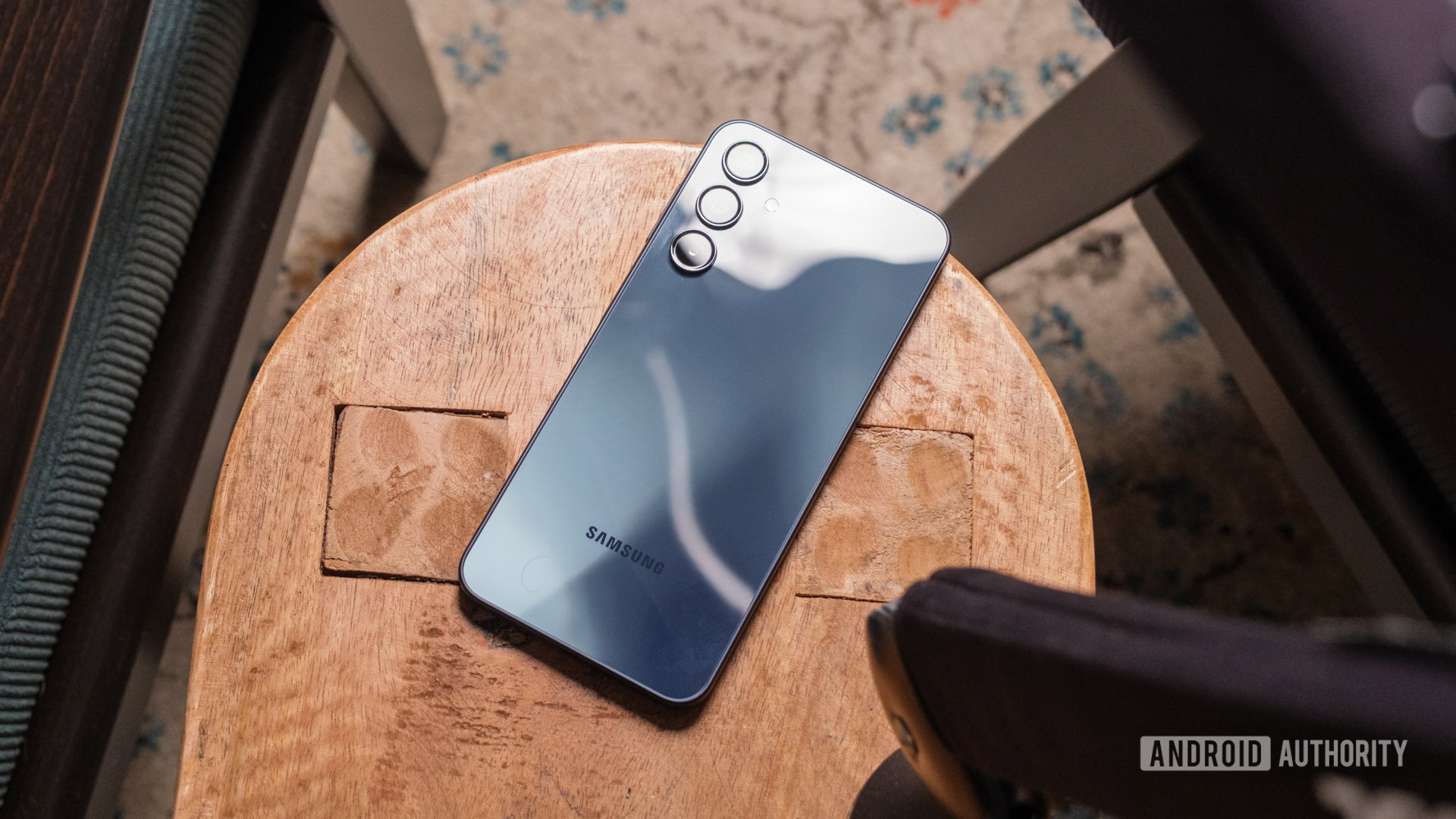
Ryan Haines / Android Authority
Google Pixel 9 Pro: The best Android camera phone


Google Pixel 9 Pro
Impressive AI-powered features • Excellent build quality • Flexible, capable cameras • Reliable update commitment
MSRP: $999.00
All Pro, in a compact package.
The Google Pixel 9 Pro is the Pixel device many have been begging for for a long time: Google’s very best smartphone hardware and software features, in a more compact form factor. With identical dimensions to the regular Pixel 9, it retains the same great specs as the much larger XL model, plus 16GB of RAM, up to 1TB of internal storage, and the Tensor G4 chipset.
Positives
- Impressive Gemini-powered features
- Excellent build quality
- Gorgeous display
- Flexible, capable cameras
- Reliable update commitment
Cons
- Tensor G4 still runs hot
- Charges slower than 9 Pro XL
- Limited base storage
A lazier guide would tell you to scroll back up to the Pixel 9 Pro XL — our pick for the best overall Android phone — skim that entry, and then come back here to understand why the Pixel 9 Pro also makes this list, as both phones share the same camera specs and smarts. But I’d much rather take this chance to hype up one of the best pocket-sized phones you can still get your hands on. After all, this is the one phone that’s made its way back into my pocket more than any other whenever I find myself between reviews, and if you don’t care about having a larger screen for snaps, the Pixel 9 Pro gets you that same industry-leading camera package for under $1,000, so it’ll save you some cash, too.
Google’s 6.3-inch flagship packs the same hardware — 50MP primary, 48MP periscope telephoto, and 48MP ultrawide sensors — as the Pixel 9 Pro XL, but the smaller body makes it much easier to pull out of your pocket and grab a photo before you miss the moment. On top of that, the Pixel 9 Pro still supports all of the same AI-powered shooting modes like Add Me, the refreshed Panorama mode, and the ability to edit your shots after the fact with Magic Editor.
Want to see the proof for yourself? You can check out a whole bunch of our camera test samples in this Google Drive.
The Pixel 9 Pro takes everything we loved about the XL and, well, shrinks it.
Of course, to make its compact Pro model run smoothly, Google had to make a cut or two. Thankfully, it didn’t follow the path of Apple’s previous Pros, putting different telephoto sensors on each size, but instead opted for a smaller battery. The Pixel 9 Pro packs a still-solid 4,700mAh battery with 27W wired charging from the same USB-C Pixel charger I’ve mentioned once or twice and 21W wireless charging from the in-house Pixel Stand. Otherwise, though, everything from the combination of aluminum and Gorilla Glass Victus 2 to the top-notch build quality and the still-questionable Temperature Sensor is a perfect match for the full-sized flagship.
Motorola Razr Ultra: The best flip-style Android foldable


Motorola Razr Ultra
Blisteringly fast charging and excellent battery life • Ultra-flagship-tier performance • Top-notch materials and eye-catching Pantone colors
MSRP: $1,299.99
High-end processing power in a folding shell
Adding Ultra to the name, the Motorola Razr Ultra is the first folding phone from Moto with a top-tier processor. The 7-inch folding display is paired with a half-size front display to give you both a premium experience, and a compact and portable communication device.
Positives
- Blisteringly fast charging and excellent battery life
- Ultra-flagship-tier performance
- Solid dual camera setup
- Top-notch materials and eye-catching Pantone colors
- Two very vibrant displays
- Clean, simple software
Cons
- Moto AI feels half baked
- Limited software commitment
- Long-range zoom kinda stinks
- Expensive
It’s tough to pick a flip phone as my favorite overall Android phone, but I think the Motorola Razr Ultra is about as close as any has come. After all, it’s the first of its form factor to truly take the training wheels off, packing its spec sheet with Ultra-grade decisions while carefully dancing within its limits. It takes almost everything I loved about the previous flagship Razr foldable, fixes the odd camera decision I thought I’d like, and then adds an extra dose of power in the form of additional RAM and Qualcomm’s top-tier chipset.
More specifically, the Razr Ultra packs an impressive 16GB of RAM in its base configuration with 512GB of storage by default, both of which are more than any of Samsung’s foldables can match. It then pairs them up with the Snapdragon 8 Elite chipset and a 4,700mAh battery that towers over that of most flip phones I’ve reviewed. Not only that, but Motorola’s top-tier flip phone also packs a charging setup worth writing home about. The Razr Ultra ships ready to handle up to 68W wired TurboPower speeds with 30W wireless charging as a backup, at least as long as you have a capable charger. That’s fast enough to run circles around everyone but OnePlus in the US, and makes an already great phone feel even better.
The Razr Ultra is by far the best-looking, most powerful flip phone I’ve ever used.
Perhaps what wins the Razr Ultra the most points over Samsung’s Galaxy Z Flip lineup is that I still prefer its cover screen experience. There are no hoops to jump through, no extra software to install, and no weird layouts to avoid. Yes, your apps use the entire display by default, meaning they might get cut off by the camera cutouts, but you can quickly fix that with a press of the gesture pill to compact the interface into a smaller square. On top of that, AI companions like Perplexity, Gemini, and Moto AI come optimized for the cover screen, making it easy to ask for help when needed.
While I don’t usually like to put too much stock into the way a phone looks — especially if I’m going to put it into a case — there’s no way around it on the Razr Ultra. Every colorful finish that Motorola offers comes from its close partnership with Pantone, and the different back panels offer more personality than the usual mix of Gorilla Glass can match. I reviewed the Mountain Trail version, which comes with a wooden back and a bronzed aluminum frame, but Motorola’s Scarab finish is an eye-catcher with its deep green color and slightly fuzzy Alcantara back panel. I might be concerned about how it’ll age in the coming years, but I can’t say I’ve seen anyone use materials quite like Motorola.
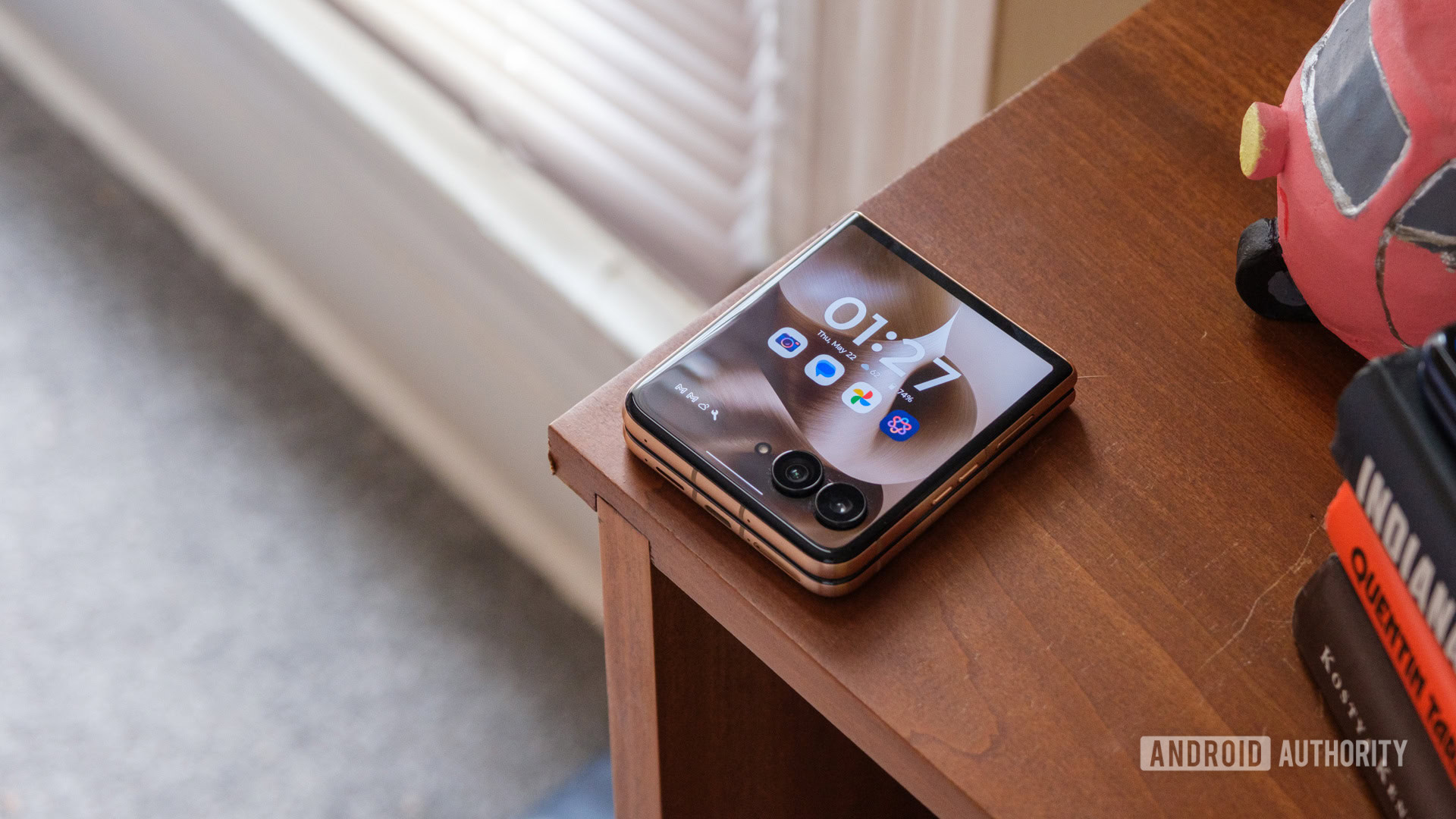
Ryan Haines / Android Authority
Google Pixel 9 Pro Fold: The best tablet-style Android foldable


Google Pixel 9 Pro Fold
Improved design • 8-inch folding display • Seven years of software updates
MSRP: $1,799.00
The Fold goes Pro.
The Pixel 9 Pro Fold is Google’s most impressive foldable to date, offering a 6.3-inch exterior display, 16GB of RAM, and 256GB of internal storage. When you’re ready for more, unfold to access the 8-inch interior display. Solid cameras, a decent battery, and top-notch software support round out this monster of a device.
Positives
- Impressively thin design that opens completely flat
- Excellent displays with high brightness
- Thoughtful enhancements to Android for foldables
- Lots of Gemini-powered AI features
- Seven years of update support
Cons
- Camera setup weaker than other Pixel 9s
- Sluggish, frustrating charging
- Tensor G4 behind the competition for power
- Buttons too low
- Extremely high price
At long last, there’s a new king of the tablet-style Android foldable phones. Yes, this was Samsung’s spot to lose for a long time — partly because it was the only real option in the US for several years — and now it’s happened. After an original Pixel Fold that felt like a bright idea with classic prototype flaws, the Pixel 9 Pro Fold feels ready to stand on its own two feet, or at least two sides of its hinge. Google took everything we liked about its original form factor, ironed out the quirks, and then completely reimagined its internal display for a more comfortable experience.
What surprised me most about coming to the Pixel 9 Pro Fold a little late in the game is that it doesn’t feel too different from the small Pixel 9 Pro, at least not when closed. As a result, I’m much more willing to pull it out of my pocket for casual tasks like streaming, social media, and updating my Strava activities without feeling like I’m trying to type on a knife’s edge. Then, when I’ve found whatever show I’m desperately trying to keep up with, I’m perfectly comfortable opening the nearly bezelless internal display and only losing a bit of space to letterboxing.
The Pixel 9 Pro Fold feels like a much larger upgrade than simply a second-year refresh.
Although it’s a massive leap forward for Google’s foldables overall, the Pixel 9 Pro Fold isn’t without its quirks. Its slim form factor means the Tensor G4 chipset has to work a little harder to vent heat, while the 4,650mAh battery is held back by just 21W wired charging — barely faster than what you get from the Pixel 9a for a third of the cost. Google’s peripheral cameras feel like odd choices, too, with just a 10.8MP telephoto and 10.5MP ultrawide to hold down the newly square camera bump.
And yet, I still feel like the Pixel 9 Pro Fold is the best tablet-style foldable you can get your hands on. Maybe it’s because many of the Android Authority crew are Pixel fans by nature, but I feel like Google’s approach to Android remains one of the cleanest and easiest to navigate, with the right mix of optimizations for the internal display. You’ll also get the full suite of AI-powered features like Call Screen, Pixel Studio, and Gemini Live, just with far more real estate on which to explore them.
OnePlus 13: The best Android phone for battery life


OnePlus 13
Gorgeous design • Clever AI features • Flexible cameras
MSRP: $899.99
The OG flagship killer’s killer flagship.
The OnePlus 13 is the company’s most killer flagship to date, offering a massive battery, speedy charging, and powerful cameras that give Google and Samsung something to worry about.
Positives
- Gorgeous design
- Incredible camera zoom and overall photography
- Helpful AI integration
- Excellent charging options
- Simplified Oxygen OS experience
- Great performance
Cons
- Magnetic charging requires accessories
- Fewer updates than Samsung or Google
These days, 5,000mAh batteries have almost become the standard on large Android flagships. Everyone is using them, from Google to Samsung to Motorola, and it’s made life hard when hunting for the phone with the best battery life. However, whenever everyone seems to catch up, there’s always one brand ready to jump ahead again. To nobody’s surprise, it’s once again the flagship killer, OnePlus. Its OnePlus 13 is a shoo-in for the best battery life, and it comes down to a no-limits combination of capacity and charging speed. Plus, it also helps that it’s generally one of the best phones OnePlus has ever made.
Up first, the cell that keeps the lights on. The OnePlus 13’s 6,000mAh cell is large enough to make all but the most dedicated gaming phones feel inadequate. It’s a full 1,000mAh larger than the battery Samsung tapped for its Galaxy S25 Ultra or Google chose for its Pixel 9 Pro XL, yet the OnePlus 13 is no thicker than either one. It can achieve such a remarkable capacity thanks to its switch from lithium-ion technology to silicon-carbon, a move that we’d love to see the likes of Samsung copy the next time it tries an ultra-thin Edge model.
Better, our objective drain testing showed that the OnePlus 13 can go on and on thanks to its impressive cooling setup and efficient Snapdragon 8 Elite chipset. It does experience some pretty extreme throttling here and there, occasionally quitting out benchmarking tests in the name of thermal management, but I’ve always been able to go two days between charges, so I’m not complaining.
OnePlus’s 6,000mAh battery looms large over most other Android flagships.
And, when you inevitably drain your OnePlus 13, SuperVOOC charging is some of the best in the business. You’ll need to keep the included USB-A charger close at hand since SuperVOOC is a much different standard than USB PD PPS in terms of support, but when you watch the OnePlus 13 fly back to a 50% charge in just 13 minutes, you probably won’t have an issue with it. OnePlus’s latest flagship also supports 50W wireless charging through a brand-new magnetic charger with a built-in fan, though you’ll need a magnetic charger and might have to use a special plastic panel to protect the Arctic Dawn finish should you choose that colorway — it’s a bit of a confusing mess, and the only blot on an otherwise near-perfect package.
ASUS ROG Phone 9 Pro: Best Android phone for gaming


ASUS ROG Phone 9 Pro
Overkill performance • Outstanding battery life • Fast, universal charging
MSRP: $1,199.99
Peak gaming power.
The ROG Phone 9 Pro is ASUS’ flagship gaming smartphone for 2024 and early-to-mid 2025. It boasts unrivaled performance, thanks to its powerhouse Snapdragon 8 Elite chip, and advanced gaming features to propel your gaming experience up another level.
Positives
- Overkill performance
- Outstanding battery life
- Fast, universal charging
- Super-stable video
- Handy AI tools
Cons
- Expensive Pro model
- Poor software commitment
- Inconsistent cameras
- No 4K recording on all lenses
The last of our main selections for this list of the best Android phones is one for the gamers, literally. ASUS’s ROG Phone 9 Pro is about as close to a gaming laptop as you can get, at least if you can ignore that it doesn’t fold in half. It has a frankly ridiculous spec sheet, offering up to 24GB of RAM with a Snapdragon 8 Elite chip under the hood and 65W wired charging that’s much faster than the MacBook Air I’m using to assemble this list.
Of course, those features aren’t completely unheard of in the flagship Android segment — well, 24GB of RAM is a lot — but its clever gaming tweaks set the ROG Phone 9 Pro apart. It pulls the programmable matrix from the back of the ROG Zephyrus and pairs it with pressure-sensitive triggers dotted around the frame to help you draw some of the controls off the 6.78-inch AMOLED itself. Those features, combined with the improved efficiency of the Snapdragon 8 Elite chip, had my colleague Rob Triggs gaming with a smile, pushing the ROG Phone 9 Pro as hard as he wanted to find out where its throttling point lay.
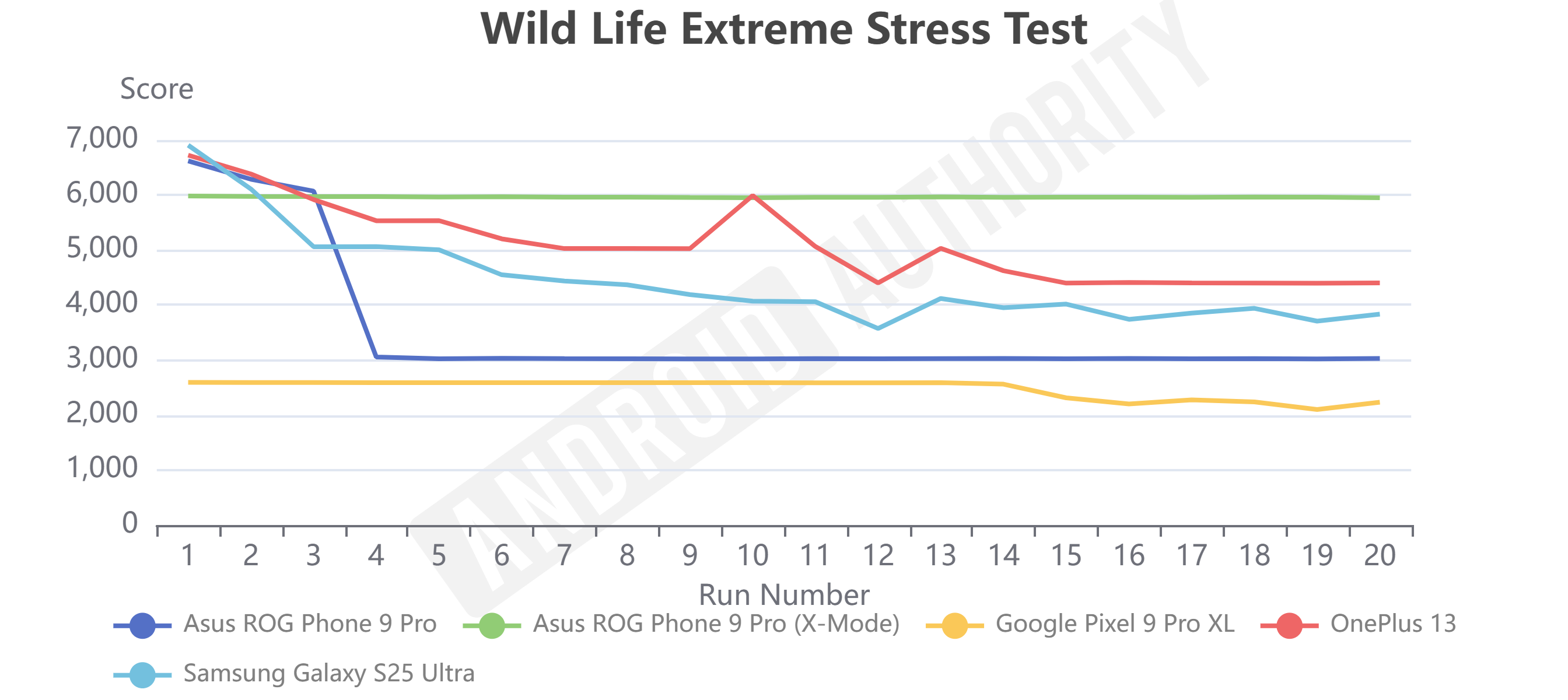
For what might be the first time, though, Rob also declared this to be a gaming phone he might not mind using every day. See, a lot of gaming-specific devices fall into the common trap of being too big, too edgy, and too expensive for casual usage, not to mention the fact that camera hardware almost always comes last. On the ROG Phone 9 Pro, however, you get an updated 50MP LYTIA 700 sensor for the bulk of your photography, and ASUS has reimagined its stabilization for better video shooting. The display is also brighter and smoother than before, topping out at a 185Hz refresh rate and 2,500 nits of brightness, which is more than enough for a bright, sunny day.
The ROG Phone 9 Pro is an elite gaming phone that’s flexible enough for everyday usage.
Also, if you’re serious about pushing the ROG Phone 9 Pro to its gaming limits (and why wouldn’t you be?), ASUS has several accessories worth checking out. Rob got plenty of mileage out of the detachable controller below, though he also mentioned the external cooling setup as a helpful option when trying to game and charge simultaneously. And, if you’re not set on the customizable LED matrix on the back, you can also check out the ROG Phone 9 to save a couple of bucks.
Honorable mentions


Xiaomi 15 Ultra
Brilliant cameras • Two-day battery life • Fast universal charging
The best camera phone you can buy?
The Xiaomi 15 Ultra is an elite camera phone with incredible photography hardware and processing. It also packs rapid charging, great battery life, and is supported by up to six years of security updates.
If the Xiaomi 15 Ultra were just a little bit easier to access in the US, it might have earned a full spot on our list rather than simply an honorable mention, and I think it still has a legitimate claim to being the best Android camera phone. Like the last few Ultras, it’s practically a mirrorless camera with a phone on the back, pairing a trio of 50MP sensors with a 200MP telephoto camera and sporting an overall design that’s reminiscent of a Leica mirrorless camera to go along with Xiaomi’s Leica-tuned color science.


Nothing Phone 3a Pro
Triple camera setup with dedicated zoom • Fast wired charging • Eye-catching design
Flagship camera zoom, budget price.
The Nothing Phone 3a Pro is a powerful budget phone with a triple camera setup that includes a periscope lens with 3x optical zoom.
Making its first full appearance on this list (CMF Phone 2 Pro not withstanding), the Nothing Phone 3a Pro is one of the most fun mid-rangers I’ve reviewed in a while. Yes, it suffers from the same limited US band support as its siblings, but it’s easy to fall in love with the dot-based Nothing OS skin, the light-up Glyph Interface, and the snappy 50W wired charging. I might like the more subtle camera bump on the Nothing Phone 3a a little better, but the extra zoom flexibility is a worthy tradeoff.


OnePlus 13R
Speedy performance • Long-lasting battery • Superb value for money
R-eally great.
The OnePlus 13R is everything you’d expect from a OnePlus phone — blazing performance, amazing battery life, and rapid charging. Add to that a gorgeous display and a smooth, feature-packed Oxygen OS experience, and you have a phone that feels like it punches well above its $600 price tag.
OnePlus’s proper 2025 flagship is more than deserving of its place as our battery king, but its mid-range option isn’t far behind. Some might say that the OnePlus 13R is a bit of a 2024 flagship in disguise, and I think they’d be right — in the best of ways. It pairs a Snapdragon 8 Gen 3 chipset with a OnePlus 13-esque design, housing a trio of camera sensors in its circular bump. I’ll never complain about a phone with a 6,000mAh battery capacity, though it’s a bit of a bummer that the included SuperVOOC charger will only get you to 55W.


Samsung Galaxy Z Flip 6
Solid dual-camera setup • Excellent build quality • Class-leading update commitment
The Flip gets refreshed.
The Samsung Galaxy Z Flip 6 introduces several exciting updates over previous Flip phones. It is equipped with a larger battery, improved cooling, and a next-gen chipset. 12GB of RAM and up to 512GB of storage mean you do not need to compromise on performance. The 3.4-inch front display offers info at a glance, while the 6.7-inch 22:9 main AMOLED display offers a 120Hz refresh rate.
Although I’m happy to call Motorola’s latest Razr Ultra the best flip phone, it’s also the most expensive. Samsung’s Galaxy Z Flip 6, on the other hand, picks up right where the Galaxy Z Flip 5 left off, with two capable cameras, a folder-shaped Flex Window, and nabs a chipset upgrade to keep things interesting. You’ll have to get used to having two app drawers if you want more than Maps, YouTube, and Google Messages at your disposal, but Samsung’s full-screen widgets are simply excellent.


Samsung Galaxy Z Fold 6
Thinner and lighter • Sizeable cover display • Great performance
Thinner, lighter, and more powerful than ever.
With a focus on refinement over previous generation Fold phones, the Samsung Galaxy Z Fold 6 rocks a 6.3-inch cover screen, a 7.6-inch, 20.9:18, 120Hz AMOLED folding display, the Snapdragon 8 Gen 3 Mobile Platform for Galaxy chipset, a 50MP camera, 12GB of RAM, and up to 1TB of internal storage.
In that same vein, the Galaxy Z Fold 6 has gone from setting the standard for book-style foldables to playing second fiddle to the Pixel. It’s still an excellent foldable, and its taller, thinner internal display sometimes makes a bit more sense than Google’s wide aspect ratio, but it hasn’t changed too much outside of a chipset upgrade in recent years, still sporting the same battery, charging setup, and cameras as the Folds that came before it.


Google Pixel 9
Powerful Gemini AI tools • Excellent build quality, refined design • Extensive update policy
The vanilla Pixel 9.
The Pixel 9 rocks a 6.3-inch display, Tensor G4 chipset, 12GB of RAM, and at least 128GB of internal storage.
If you’ve spent any time looking for a great Android phone, you’ll know there aren’t many small ones left. Somehow, 6.5-inch or larger displays have become the standard, leaving those of us with smaller hands relegated to a precious few picks. Thankfully, the Pixel 9 is one of those, offering quite a lot of the Pro-level experience in a slightly more comfortable form factor. Its 6.3-inch display is easy to reach across yet doesn’t feel so tiny that you’re missing out on real estate. If we hadn’t already put every other Pixel 9 device on this list, this one might have earned more than an honorable mention.


Samsung Galaxy S24 FE
Flexible cameras for the price • Class-leading update commitment • Great value
A phone that fans and Galaxy newcomers will love.
The Galaxy S24 FE is a Samsung flagship in all but name. It delivers the right mix of performance, Galaxy AI smarts, camera flexibility, and overall durability while keeping the cost pegged right at $650, and with an update promise that matches the Android elite.
Many of Samsung’s best offerings lay it on pretty heavy with the focus on power users, and there’s nothing wrong with that. However, it also has the unintended benefit of making Samsung’s budget-conscious picks stand out slightly more. The Galaxy S24 FE is one such option, landing just below the flagship tier with a display that nearly matches the Galaxy S25 Plus, materials like aluminum and Gorilla Glass Victus Plus that I’d trust without a case, and just enough of a dip into Galaxy AI to give more users a taste of Chat Assist, Note Assist, and better photo editing tools.

Sony Xperia 1 VII
High-res audio capture • Top-tier specs • AI camera assist
Now with Walkman DNA and AI camera tools
The Sony Xperia 1 VII focuses media capture, including Walkman DNA with integrated high-quality audio components, and powerful AI tools to help capture the best possible images and video. A 5,000mAh battery promises two-day battery life running the Snapdragon 8 Elite chipset, 12GB of RAM, 256GB of storage, a 6.5-inch FHD+ display, and a 52MP camera.
The last honorable mention — but certainly not the least — might be the best phone you can buy as an audiophile. Sony’s Xperia 1 VII still carries a headphone jack, supports LDAC and DSEE, packs Dolby Atmos tuning, and offers stereo speakers for when you want to share your songs with friends. It also benefits from Sony’s excellent Bravia displays, Exmor camera sensors, and a few new AI features like Auto Framing and AI Camera Work that make it easier to create content. We haven’t reviewed this one yet, but it’s great to see Sony continue to do its own thing among Android OEMs.
What to look for in a good Android phone
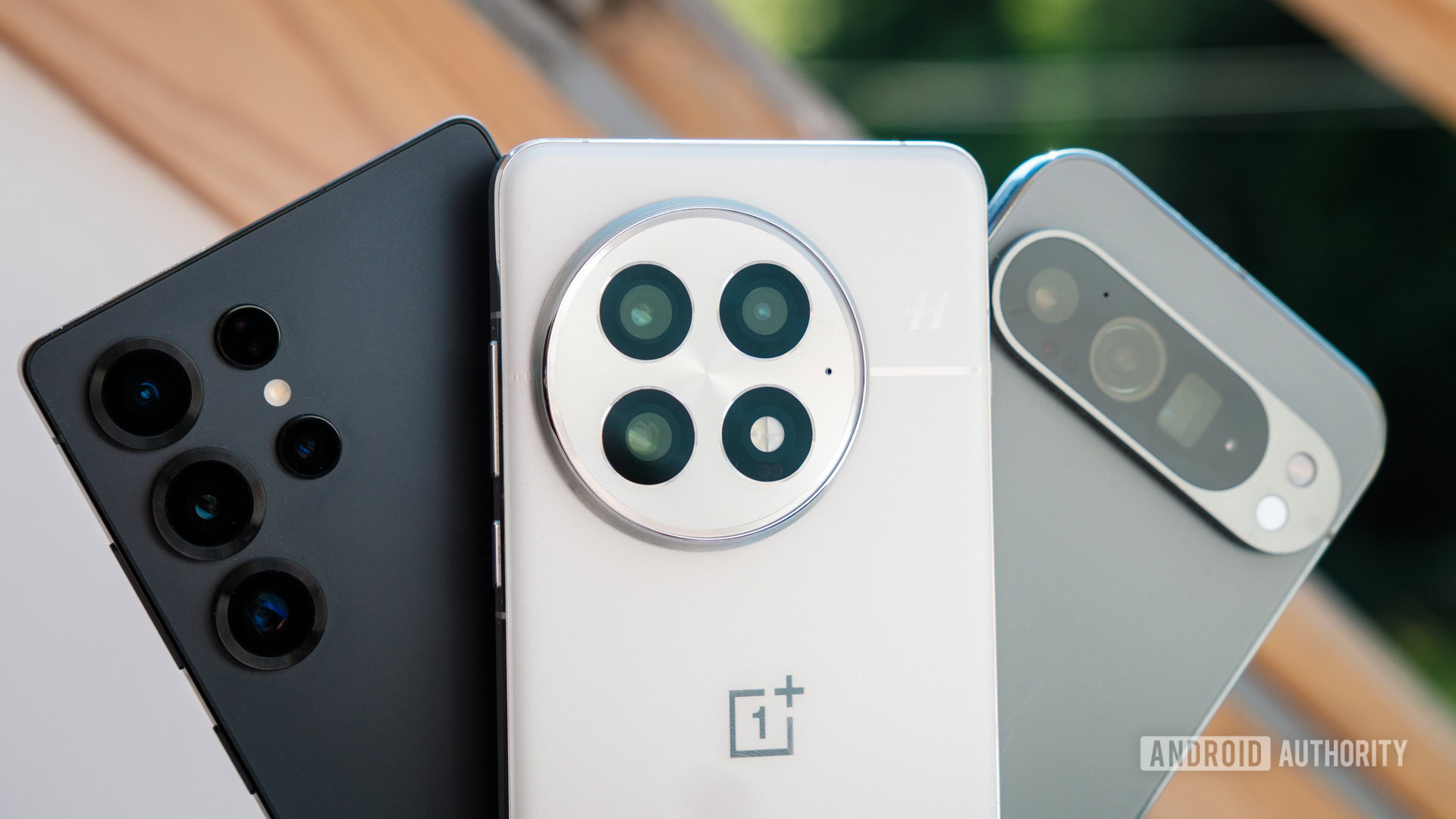
Robert Triggs / Android Authority
We could sit here and list the best Android phones all day — we’re phone nerds, it’s our job. We’ll sit here and reminisce on some of the best phones from yesteryear, too, looking for any excuse to pull something fun out of the closet. However, just because we like one or two or ten things about a phone doesn’t mean it’s right for you. There’s much more to consider before you splash the cash, especially if you plan to have this phone for several years.
We have our favorite Android phones, but the best way for you to pick one is to break it down into the features you really want.
For example, if you want a small, super-portable phone, something like the Galaxy S25 Ultra simply won’t work, no matter how you try to wrangle it. That 6.9-inch display will always feel too big for your pocket. At the same time, it’s a great phone that packs flexible cameras, a powerful chipset, and a convenient S Pen, so it’s all about deciding what features you absolutely must have in a device.
So, with that in mind, here are a few things I always tell people to look for when buying a new phone:
- Software updates: A phone is only as good as the number of software updates it will receive. You won’t be able to change your battery, display, or camera hardware over time, so most of the value you’ll pull from a phone comes from keeping it for years and years after you’ve paid it off. The best way to guarantee some of that value is with a Pixel or Galaxy device set for seven years of patches, though Motorola and OnePlus are catching up with four and five years of support at their flagship levels.
- Camera flexibility: If you’re after one of the best Android phones on the market, you probably have high camera expectations. It’s perfectly understandable — you’ll probably capture your life with this device for several years. And, as you might have noticed, single-camera Android phones aren’t a thing anymore. So, if you prioritize a great camera phone, you’ll want to keep an eye on things like sensor size, telephoto focal length, and how your phone processes images after the fact.
- Display size: As mentioned above, finding a small Android phone is easier said than done these days. There aren’t many 6.1-inch or 6.2-inch options left, with premium picks like the Pixel 9 Pro XL and Galaxy S25 Ultra measuring close to 7 inches, and many budget to mid-range options measuring 6.5 inches or larger. Also, if display size is no issue (or you want a phone that can check two boxes at once), you might consider a foldable that can take over for a tablet, too.
- RAM and storage options: Depending on your needs, you might also want to monitor the RAM and storage that your chosen Android phone comes with. At one point, 8GB of RAM was enough to tackle everything from web browsing to gaming to streaming a full season on Netflix, but no longer. With the explosion of AI-powered features, 12GB is closer to the bare minimum for flagships, while the Pixel 9 Pro series feels even more capable with 16GB across the board.
- To fold or not to fold: Foldable Android phones remain one of the most exciting categories in tech, at least to me. They’ve improved by leaps and bounds in recent years, picking up better cameras, thinner hinges, and better protection against water and dust. However, you’ll still have to weigh out whether or not you have the budget to try something new and if you can live with a spec sheet that hasn’t caught up just yet.
- Durability: These days, phones feature more premium materials than ever, sometimes pairing aluminum and titanium frames with advanced glasses like Panda Glass and Gorilla Glass or interesting textures like vegan leather and, in the case of the Razr Ultra, Alcantara. My advice would be to think about what materials you want and whether or not you plan to put your phone in a case. Also, keep in mind that IP68 ratings against water and dust have become the standard for many flagships, so think twice before settling for a lower rating, even if it saves money.
- Charging speed: It’s no longer a surprise to see phones ship with 5,000mAh batteries — in fact, it’s expected on phones of a certain size. However, with great power capacity comes great responsibility, so you’ll want to keep an eye on the charging speeds that your new phone supports. Some, like OnePlus, offer up to 80W speeds with the correct charger, while others, like the Galaxy S25, won’t go above 25W no matter how hard you try. Also, if you opt for something like the Pixel 9 Pro XL, you’ll need Google’s in-house USB-C charger to guarantee the best speeds, so you might need to budget for some extra charging accessories.
- AI features: One last thing worth watching — and probably the least essential of my picks — is the list of AI features your new phone will support. If you opt for a flagship Pixel or a Galaxy S25, you’ll get a pretty solid set of Gemini and Galaxy AI picks, while the OnePlus 13 and Motorola Razr lineup might lag behind just a bit. Then again, you might find that the available features don’t quite mesh with your usage or don’t feel quite polished enough, so you may also be able to get by with Circle to Search and some of the other features that have made their way to lower price points.
Why you should trust me
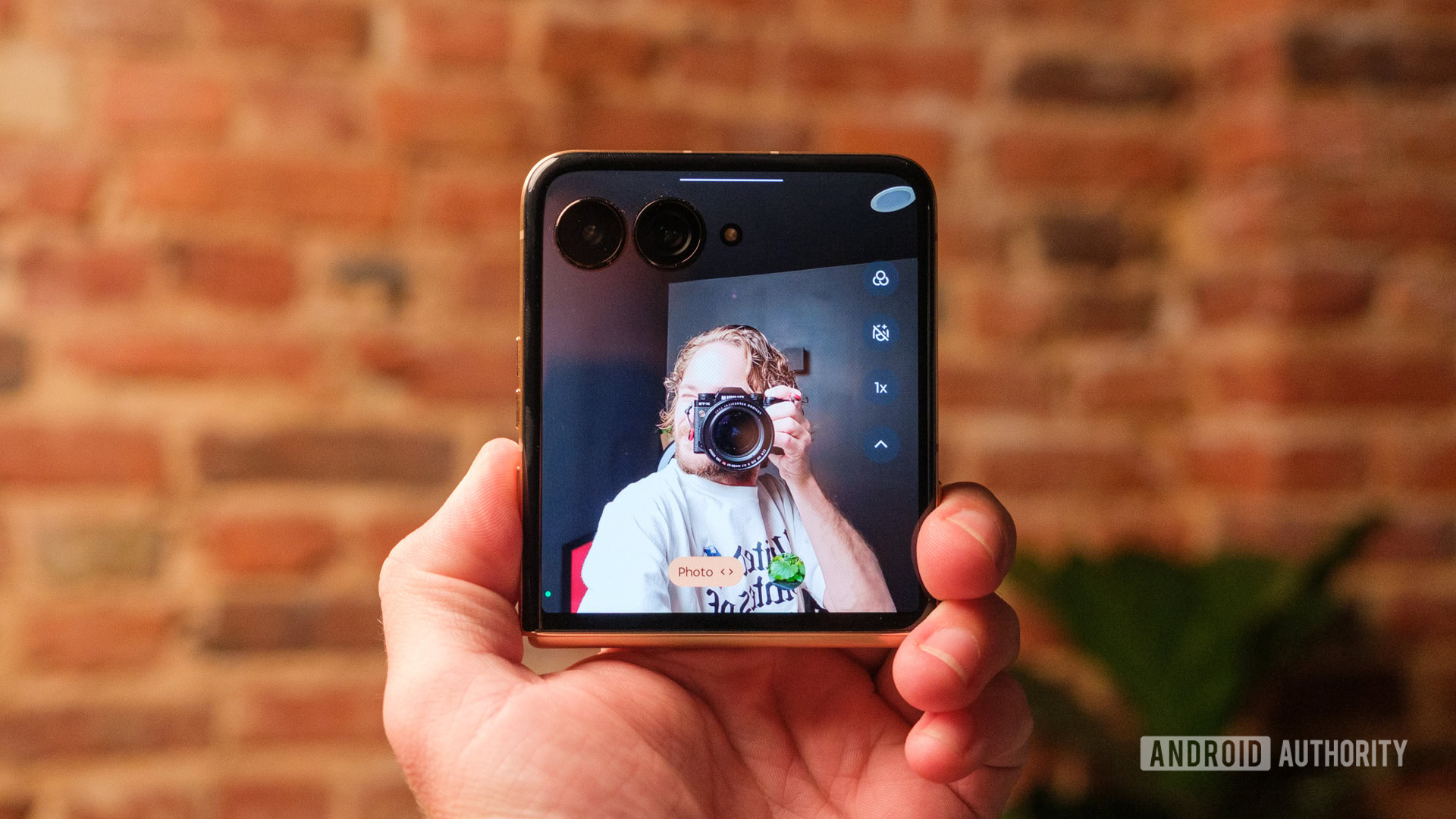
Ryan Haines / Android Authority
I’m a phone guy — always have been. I can still rattle off every device I’ve ever purchased with my own money, and I continue to hold the LG G3 as one of my favorite phones of all time. I stayed almost perfectly true to Android ever since my parents got me my first smartphone after I made it to high school, at least as long as you’re willing to forgive the few years I spent with an iPhone 7 when I let green bubble bullying get the best of me.
Since then, I’ve made my love of phones into my day job, shifting my personal SIM more times than I can count and spending time with everything from the Motorola Moto G Play (2021) to the OnePlus Open to the Galaxy S25 Ultra in my pocket. I won’t pretend to have loved every phone I’ve reviewed — you have to break a few eggs to make an omelet — but I’ve taken highlights away from each one and come to appreciate Android options both high and low.
I review dozens of Android phones every single year, and my personal SIM moves around enough to qualify for frequent flyer status.
Further, my opinions come from more than simply running around with a new phone in my pocket. Part of my role as a reviewer is to work closely with my colleague, and our resident testing expert, Rob Triggs, to come up with objective metrics by which we can compare devices. We’ve worked closely to cook up tests for battery life and charging, along with a nicely standardized set of ways to put CPUs and GPUs through their paces long before I ever sit down to write a review. Do I still count my hands-on experience? Of course I do, but I also like to ensure that data backs them up. If you want more information on our testing procedures, you can read our full methodology at the link.
What do you look for in an Android phone?
1 votes
Sometimes, my need to be thorough means that I’m not the first reviewer to press the publish button, and I’m rarely the shortest and sweetest among my peers, but I don’t mind. I’ll happily cause a little bit of a headache for my editor (shout out to you, Ollie) if it means I know I’m being as thorough as possible. Besides, with how far phones have come in just the last few years, I’m not sure how anyone could put together a review without stopping and taking a few stretch breaks.







